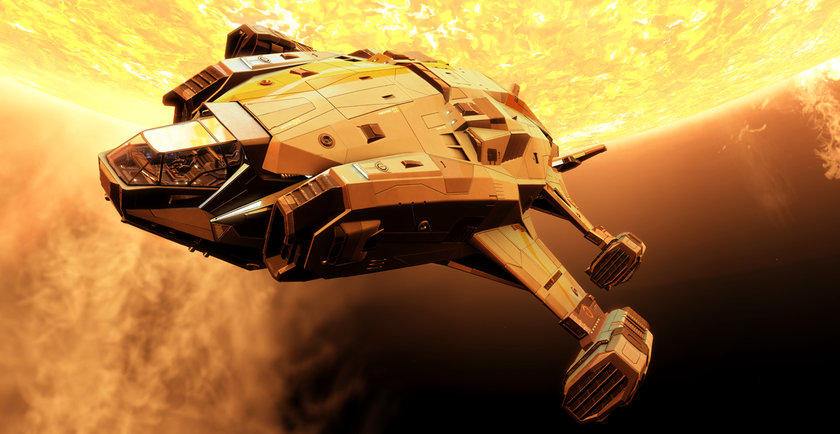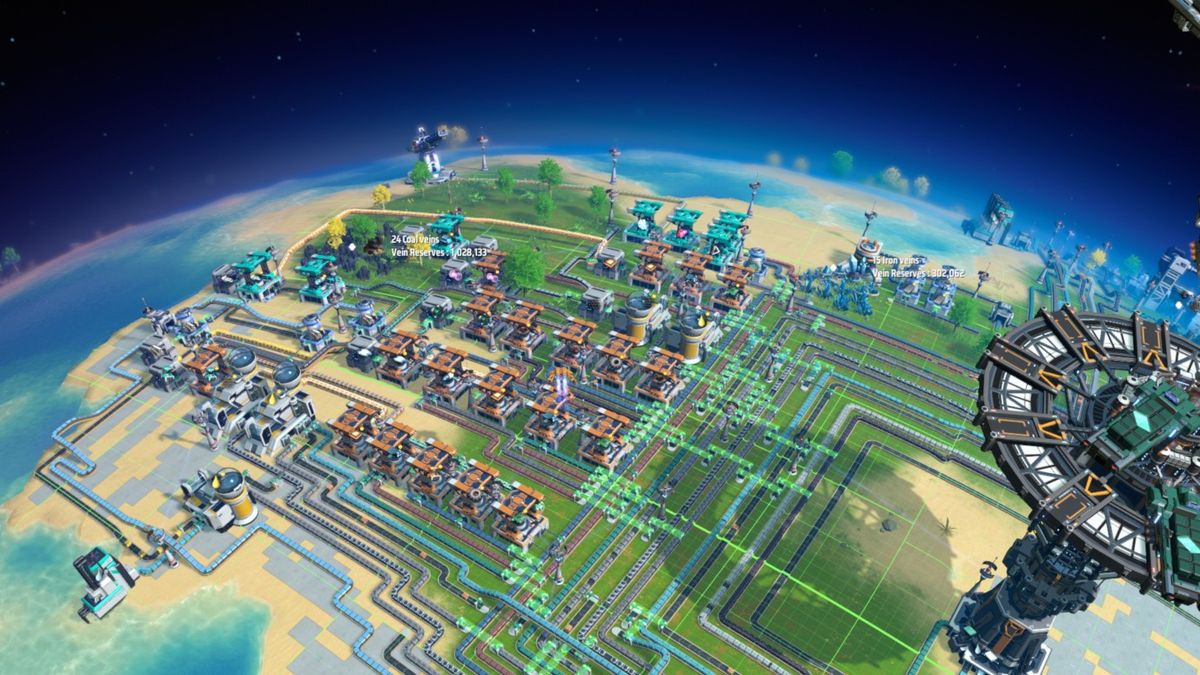
Dyson Sphere Program Logistics Stations are a core part of the Youthcat Studio's factory-building mid-game. They’re crucial to expanding your manufacturing project beyond your starting planet, harvesting resources from other parts of your star system and beyond.
Substantial building projects in their own right, logistics stations in Dyson Sphere Program can be tricky to setup properly. In this guide, I’ll explain what each Logistics Station is for, how to build them, and how to get the most out of them.
Dyson Sphere Program Logistics Station: How do they work?
Logistics Stations are basically spaceports, used to transport resources both around planets and between them. They become a necessary component of your factory after you research both blue and red Matrix Cubes. Beyond this point, many new technologies require titanium to research and produce. The trouble is that the primary source for the metal, titanium veins, don't appear on your starting planet.
Logistics Stations can also help you obtain other rare resources, such as silicon, which is hard to manufacture in large quantities on your starting planet. Finally, they make transporting large amounts of resources much easier over a distance, whether that’s on the same planet or between them.
Dyson Sphere Program Planetary Logistics Station: How to build it
The first Logistics Station you’ll unlock is the Planetary Logistics Station, the source of some confusion. To be clear, the Planetary Logistics Station is used only for transporting cargo between different points on the same planet. If you want to transport resources between planets, you need to unlock the Interstellar Logistics station (there is no Interplanetary Logistics Station). More on that below.
To build a Planetary Logistics Station, you first need to research the relevant technology. Once you’ve done that, constructing the station requires the following:
- 40 Steel
- 40 Titanium Ingot
- 40 Processors
- 20 Particle Containers
Since you won’t find titanium on your starting planet, you’ll need to search your star system for a planet rich in titanium veins. Once you’ve found a suitable candidate, establish a mining operation so you can bring some back and perform the necessary research and construction. Read my Dyson Sphere Program titanium guide for more help with that.
The biggest gaming news, reviews and hardware deals
Keep up to date with the most important stories and the best deals, as picked by the PC Gamer team.
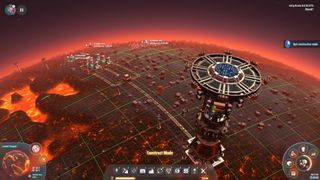
Establishing a logistics network requires at least two stations. Then you must supply each station with Logistics Drones, a separate technology that must be researched and produced. Constructing drones requires the following:
- 5 Iron Ingot
- 2 Processors
- 2 Thrusters
To set up the network, place your Planetary Logistics Stations where you want them, insert the Logistics Drones in the relevant box (each station can hold up to 50) and connect the stations up to your factory with transport belts. If you want the station to send items somewhere else, you need the belts to feed into it.
If you want the station to dispense deposited items, you need belts to feed outwards. In addition, with outward feeding belts, you must set a filter for each belt so the station knows which item to pull out. You can do this by clicking the button that appears above the relevant belt port when you mouse over it.
Now you need to set up supply and demand. On Planetary Logistics Station’s menu, export an item by clicking on one of the available slots, then ensure that the button the right is set to supply. Next, head over to your other station and repeat the process, but this time ensure the button on the right is set to demand.
If you’ve done all this correctly, you should see a nice line of drones flying off to deposit/collect your chosen cargo.
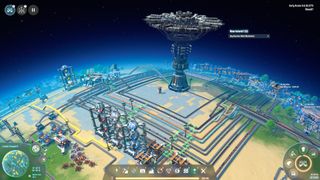
Dyson Sphere Program Interstellar Logistics Station: How to build it
Where Planetary Logistics Stations only ferry resources around the same planet, Interstellar Logistics Stations can transport cargo to different planets. As you’d probably expect, this means they’re larger, harder to produce, and draw more power from your network than their terrestrial equivalents.
To construct an Interstellar Logistics Station, you’ll need to research Interstellar Logistics System and Reinforced Thrusters. To build one, you’ll need:
- 1 Planetary Logistics Station
- 40 Titanium Alloy (made by smelting Titanium Ingots with Sulphuric Acid and Steel)
- 20 Particle Container
You’ll also need to produce Logistics Vessels to carry your precious cargo through the inky void of space. Producing those requires:
- 10 Titanium Ingot
- 10 Processors
- 2 Reinforced Thrusters (made by combining 5 Titanium Ingots with 5 Electromagnetic Turbines in an Assembler)
Establishing an Interstellar Logistics Network works similarly to its Planetary cousin, but with one crucial difference. As well as telling the station whether to supply or demand resources, you also need to specify whether that supply/demand is local or remote. An Interstellar Logistics Station set to Remote Supply will try to send resources to a station located on a different planet, while one set to Remote Demand will request items from a different planet.
So Interstellar Logistics Stations can also supply and demand resources on the same planet, meaning they can work in conjunction with Planetary Logistics Stations. To do this, you’ll need to staff the Interstellar Logistics Station with Logistics Drones as well as Logistics Vessels (there’s a slot for each).
One last thing worth noting about Interstellar Logistics Stations. When you place them onto the electrical grid, they draw a huge amount of power during their initial charge. So ensure your energy network is equipped to deal with it, especially if you’re building one on a new, relatively undeveloped planet.
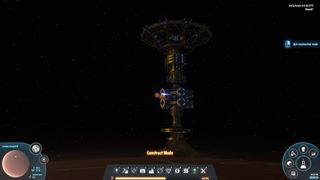
How to construct an Orbital Collector
The Orbital Collector is the final Logistics Station you can build in Dyson Sphere Program. It’s also a slightly unusual one, designed specifically for harvesting resources from gas giants. To construct one, you’ll need to research the 'Gas Giant Exploitation' technology, along with the following items:
- 1 Interstellar Logistics Station
- 30 Super-magnetic ring
- 20 Reinforced Thruster
- 20 Full Accumulator
Note that to fill Accumulators (which are basically giant batteries) they must be manually charged by placing them within the energy grid of your factory. Once they’re full, dismantle them, and they’ll return to your inventory as a Full Accumulator.
To setup an Orbital Collector, fly to the nearest gas giant and place the Collector on the equator. This can be a bit fiddly as gas giants are hard to navigate once you’re in orbit of them. Your best bet is to fly around with your Orbital Collector ready to place, and wait until the structure outline turns blue. You can also use the planet map to navigate more precisely.
Once placed, an Orbital Collector will automatically suck up resources like hydrogen and deuterium from the gas giant. These will be collected by Logistics Vessels belonging to any Interstellar Logistics Stations set to have a demand for those resources. They don’t house any vessels or drones themselves; they’re collection only establishments.
By following these steps, you’ll soon have a fully operational logistics system right across your star system. Note that both drones and vessels are fully simulated, so you can follow them around your planets and star systems as they go about their business. This is just one of the many awesome sights you can create for yourself in Dyson Sphere Program.
Most Popular



